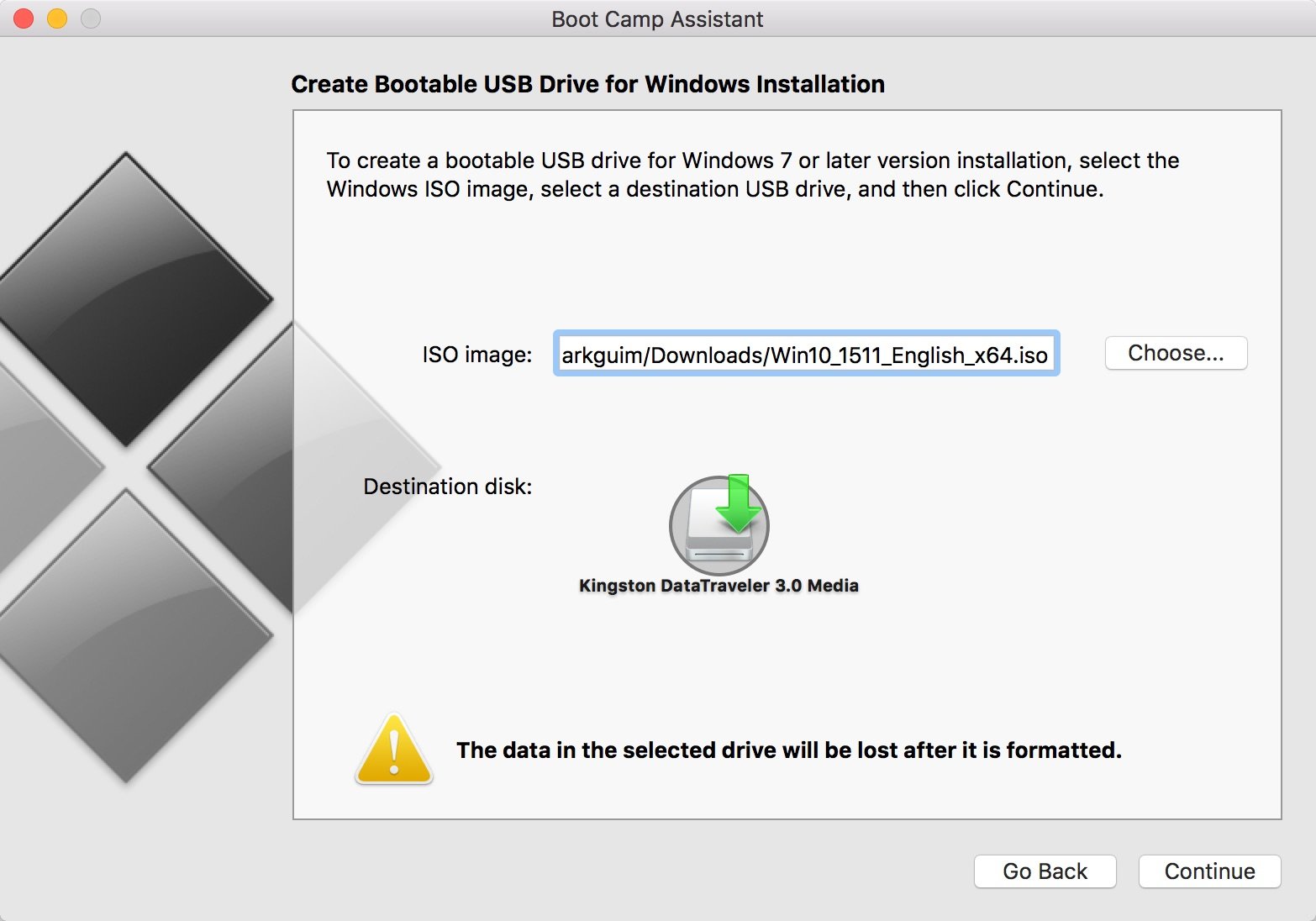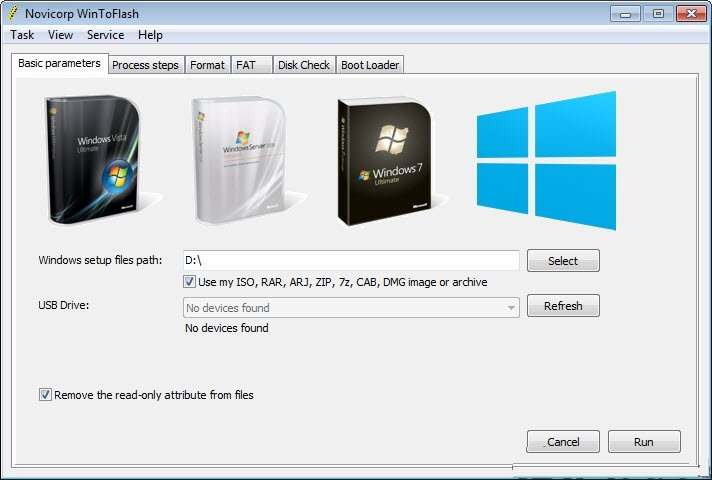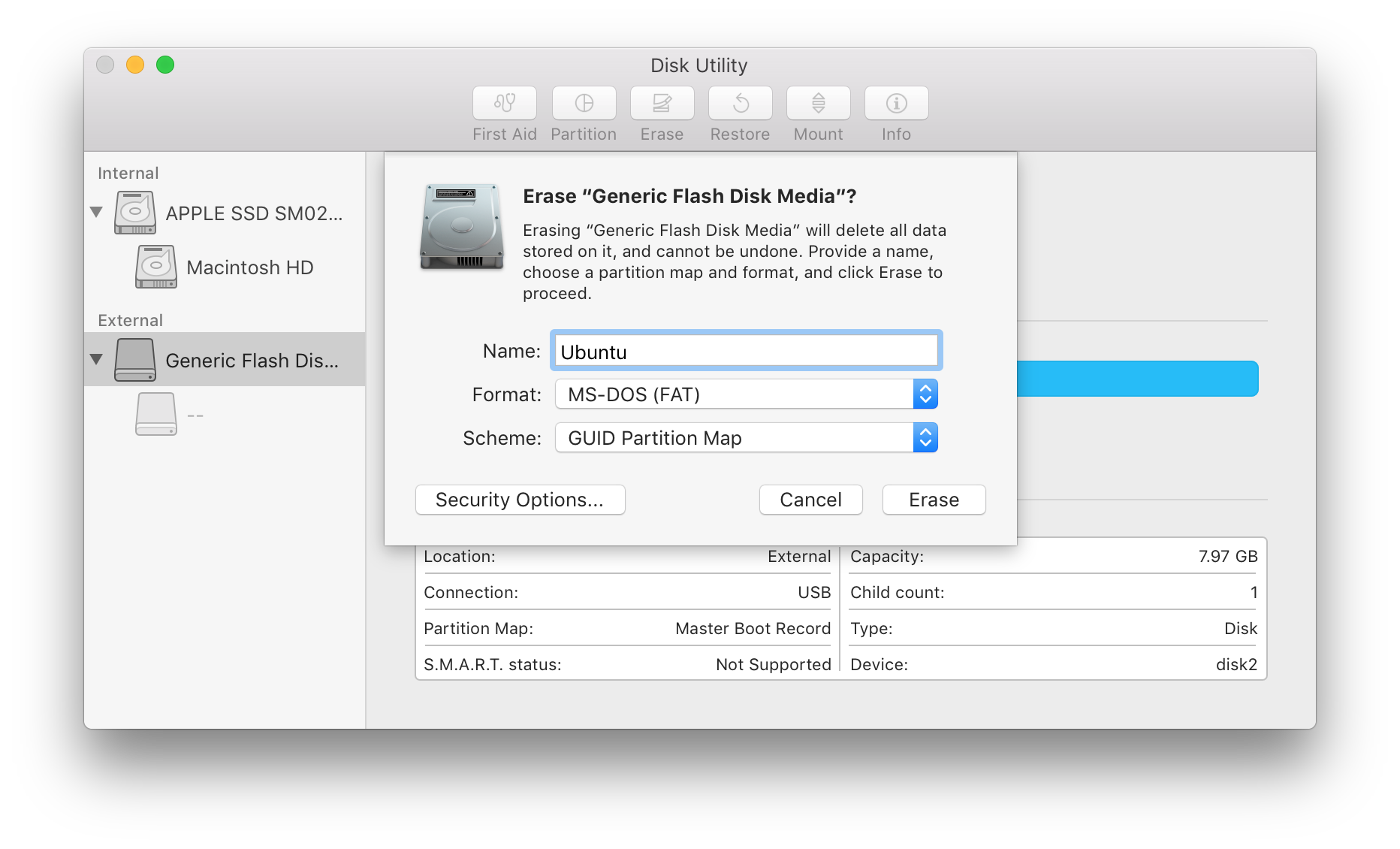When OS X shipped on a DVD a good number of years ago, you always had the convenience of a bootable installer—an OS X installer that could be used to boot your Mac if its own drive was having problems. But to install or reinstall a recent version of OS X, you must either download a non-bootable installer from the Mac App Store or (via OS X’s invisible, bootable recovery partition) download 6GB of installer data from Apple’s servers during the installation process. In other words, you no longer have the same safety net or convenience.
- Make Bootable Mac External Drive
- Make Bootable Mac Usb
- Make Bootable Mac Os Drive
- Make Bootable Mac Os X Usb Drive
Because of this, I recommend creating your own bootable El Capitan (OS X 10.11) installer drive on an external hard drive or USB thumb drive. If you need to install El Capitan on multiple Macs, using a bootable installer drive is faster and more convenient than downloading or copying the entire installer to each computer. If you want to erase the drive on a Mac before installing El Capitan, or start over at any time, you can use a dedicated installer drive to boot that Mac, erase its drive, and then install the OS (and subsequently restore whatever data you need from your backups). And if your Mac is experiencing problems, a bootable installer drive makes a handy emergency disk.
Rufus won't make a bootable USB compatible with Mac as it cannot interpret the boot loader (at least not in Mavericks and up). Fat32 can't handle the 5+GB Mavericks image either. Not say you didn't get an older version to work, however, just to keep others from wasting their time. – MC9000 Jan 5 '18 at 20:36.
(OS X Recovery lets you repair your drive and reinstall OS X, but to perform the latter task, you must wait—each time you use it—for the entire 6GB of installer data to download. At best, that’s a hassle; at worst, it’s hours of waiting before you can get started.)
As with previous versions of OS X, it’s not difficult to create a bootable installer drive, but it’s not obvious, either. I show you how, below.
- A bootable USB is super convenient to have on hand if you need to install or repair an operating system on your computer. You can easily make your own bootable USB that’s equipped with the operating system of your choosing. Whether you’re using Windows or a Mac, we’ll walk you through the process step-by-step.
- Select Mac OS Extended (Journaled) from Format dropdown. Type BigSur or any other name you like. Make it simple because you will use this name in the next step. Click Erase and wait until the media is erased. Step 3: Making the Bootable Media. Now open Terminal and type the following command. Make sure you don’t leave any spaces.
Keep the installer safe
Like all recent versions of OS X, El Capitan is distributed through the Mac App Store: You download an installer app (called Install OS X El Capitan.app) to your Applications folder. In this respect, the OS X installer is just like any other app you buy from the Mac App Store. However, unlike any other app, if you run the OS X installer from that default location, the app deletes itself after it’s done installing OS X.
If you plan to use the OS X installer on other Macs, or—in this case—to create a bootable installer drive, be sure to copy the installer to another drive, or at least move it out of the Applications folder, before you use it to install the OS on your Mac. If you don’t, you’ll have to redownload the installer from the Mac App Store before you can use the instructions below.
What you need
To create a bootable El Capitan installer drive, you need the El Capitan installer from the Mac App Store and a Mac-formatted drive that’s big enough to hold the installer and all its data. This can be a hard drive, a solid-state drive (SSD), a thumb drive, or a USB stick—an 8GB thumb drive is perfect. Your drive must be formatted as a Mac OS Extended (Journaled) volume with a GUID Partition Table. (Follow this tutorial to properly format the drive if you’re using OS X Yosemite or older. If you’re using OS X El Capitan, use these instructions.)
Your OS X user account must also have administrator privileges.
Apple’s gift: createinstallmedia
In my articles on creating a bootable installer drive for older versions of OS X, I provided three, or even four, different ways to perform the procedure, depending on which version of OS X you were running, your comfort level with Terminal, and other factors. That approach made sense in the past, but a number of the reasons for it no longer apply, so this year I’m limiting the instructions to a single method: using OS X’s own createinstallmedia tool.
Starting with Mavericks, the OS X installer hosts a hidden Unix program called createinstallmedia specifically for creating a bootable installer drive. Using it requires the use of Terminal, but createinstallmedia works well, it’s official, and performing the procedure requires little more than copying and pasting.
The only real drawback to createinstallmedia is that it doesn’t work under OS X 10.6 Snow Leopard—it requires OS X 10.7 Lion or later. Though it’s true that some Macs still running Snow Leopard can upgrade to El Capitan, I think it’s safe to assume that most people installing OS X 10.11 will have access to a Mac running 10.7 or later.
(If you absolutely refuse to go near Terminal, an El Capitan-compatible version of DiskMaker X is now available, although I haven’t yet had the chance to test it.)
Making the installer drive
- Connect to your Mac a properly formatted 8GB (or larger) drive, and rename the drive
Untitled. (The Terminal commands I provide here assume that the drive is named Untitled. If the drive isn’t named Untitled, the procedure won’t work.) - Make sure the El Capitan installer (or at least a copy of it), called Install OS X El Capitan.app, is in its default location in your main Applications folder (/Applications).
- Select the text of the following Terminal command and copy it. Note that the window that displays the command scrolls to the right.
- Launch Terminal (in /Applications/Utilities).
- Warning: This step will erase the destination drive or partition, so make sure that it doesn’t contain any valuable data. Paste the copied command into Terminal and press Return.
- Type your admin-level account password when prompted, and then press Return.
- You may see the message “To continue we need to erase the disk at /Volumes/Untitled. If you wish to continue type (Y) then press return:” If so, type the letter Y and then press Return. If you don’t see this message, you’re already set.
The Terminal window displays createinstallmedia’s progress as a textual representation of a progress bar: Erasing Disk: 0%… 10 percent…20 percent… and so on. You also see a list of the program’s tasks as they occur: Copying installer files to disk…Copy complete.Making disk bootable…Copying boot files…Copy complete. The procedure can take as little as a couple minutes, or as long as 20 to 30 minutes, depending on how fast your Mac can copy data to the destination drive. Once you see Copy Complete. Done., as shown in the screenshot above, the process has finished.
Createinstallmedia will have renamed your drive from Untitled to Install OS X El Capitan. You can rename the drive (in the Finder) if you like—renaming it won’t prevent it from working properly.
Booting from the installer drive
You can boot any El Capitan-compatible Mac from your new installer drive. First, connect the drive to your Mac. Then, restart your Mac (or, if it’s currently shut down, start it up) while holding down the Option key. When OS X’s Startup Manager appears, select the installer drive and then click the arrow below it to proceed with startup. (Alternatively, if your Mac is already booted into OS X, you may be able to choose the installer drive in the Startup Disk pane of System Preferences, and then click restart. However, sometimes OS X installer drives don’t appear in the Startup Disk window.)
Make Bootable Mac External Drive
Once booted from your installer drive, you can perform any of the tasks available from the OS X installer’s special recovery and restore features. In fact, you’ll see the same OS X Utilities screen you get when you boot into OS X Recovery—but unlike with recovery mode, your bootable installer includes the entire installer.
Apple has just released the final version of macOS Big Sur to the public. You can start upgrading your compatible Mac devices by downloading Big Sur from the App Store or Settings > Software Updates. But if you prefer to completely wipe out your Mac and do a fresh install of macOS Big Sur, you will need a bootable media.
I perform a fresh install every time Apple releases a major macOS version – which usually happens once a year. This time too, I will update my Macbook Air by performing a fresh install. And to do that, I will make a bootable SD card. You can also use a USB stick aka pen drive aka flash drive and perform a fresh install.
In this quick tutorial, I will share how I make a bootable macOS memory card or USB stick, wipe my Mac, and perform a fresh install. You will need a stable internet connection and a storage media with minimum 16GB space. Before you begin, make sure you have taken backup of your Mac.
Step 1: Download macOS Big Sur
Open App Store and search for macOS Big Sur. Click Get and the Software Update window will open. Click upgrade now and it will start downloading the macOS update. If you don’t see macOS Big Sur in App Store, follow this link and choose open link in App Store.
The installer is 12GB so be patience.

Once it finished downloading, the macOS installer is placed under Applications and will run automatically. Close the setup window.
Step 2: Preparing the Storage Media
Insert the storage media you would like to use. I use a 64GB micro SD card with my MacBook Air. You can use a USB-C to USB adapter for Mac models without USB A ports and memory card slot.
Open Disk Utility.
Select the storage medium you just connected from the list on left and click Erase. Select Mac OS Extended (Journaled) from Format dropdown. Type BigSur or any other name you like. Make it simple because you will use this name in the next step.
Click Erase and wait until the media is erased.
Step 3: Making the Bootable Media
Now open Terminal and type the following command. Make sure you don’t leave any spaces. Replace BigSur with whatever name you chose in Step 2.

Press enter.
Enter your password, type Y and press enter again. The process takes roughly 20 minutes. After it’s finished, you will notice that the name of your USB stick/SD card has been changed to Install macOS Big Sur.
Step 4: Installing macOS Big Sur from Bootable Media
Right. Now you have a Big Sur bootable media. It’s time to start the installation process.
Restart your Mac. When it’s booting up (right after the chime sound), press and hold Option key until you see a screen with an option to select the startup disk.
Select Install macOS Big Sur and click continue. Let the installer load.
Make Bootable Mac Usb
Now you will see the macOS Recovery screen which will ask you to select a user account which you know the password of. Choose your administrator account and enter password. Note that this is the user on your current macOS setup.
Click Disk Utility and continue. Select the volume where macOS is currently installed on your Mac. Click Erase. Leave all options as default. Click Erase again.
After the process finishes, close Disk Utility and you will return to the recovery screen. Choose ‘Install macOS’ this time and click continue.
The macOS installation process will start and your Mac will reboot a few times.
Make Bootable Mac Os Drive


Once finished, you should see the macOS setup screen. After you are done with onboarding, you will see the desktop and are all set to start using macOS Big Sur.
The same bootable media you just made can be used to install macOS Big Sur on all your (compatible) Macs. This approach helps save bandwidth if you have more than one devices while also letting you erase all data and perform a clean install. It will also come in handy as a recovery media if your Mac software misbehaves in future.
That’s all, folks. This was a tutorial on making a bootable macOS Big Sur installation media. I hope you found it useful and I’d like to thank you for reading.
Make Bootable Mac Os X Usb Drive
Support Me: If this article/tutorial helped you today, please consider supporting me and help me run techstuffer.com.
